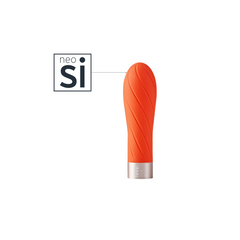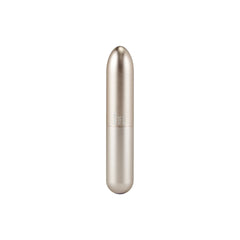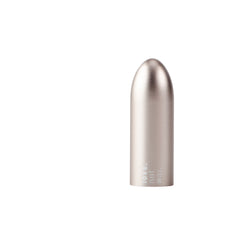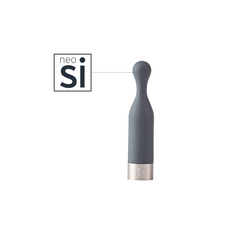The benefits of masturbation have been proven to help with sleeping and stress and also just genuinely help to make your day that little bit brighter. To keep the spark alive in your sex life, either as a couple or in solo play, and not develop an embarrassing case of carpal tunnel syndrome, sex toys are a great addition to the bedroom.
In a 2004 study, it was found that over 50% of women either own or have owned a vibrator at some point in their lives. Another study also revealed that in 2020 during the first year of the pandemic, right at the height of lockdown, there was a huge increase in sex toy purchases. Most notably Italy, which saw an increase of 61% and America with a 75% increase.
With all of us going through two years of madness it is no surprise that people were looking for more creative ways to relieve stress and bring a little positivity to their lives. However, sex toys are not a new phenomenon, harking back to the ancient world, people have been using sex toys for masturbation and sexual pleasure since the dawn of time.
In this blog, join us as we take a step back through time and explore the history of sex toys, everything from ancient dildos and wand vibrators to silicone vibrators!
Ancient History
Starting right back where it all began, the oldest sex toy known to date was found in a German cave in 2005. Believed to be 28,000 years old and made in 26,000 AD, the phallic-looking item was created out of siltstone meaning it was made up of fragments of sedimentary rock.
Fast forward a few centuries to when historians discovered wall paintings from ancient Egypt that date back to 1150BC. These depict acts of masturbation using phallic-shaped objects made from a variety of natural materials including stone and leather. In ancient Greece, toys were also found to be made from materials such as wood, glass, and leather, some were even made of bread!
In China, sex toys have also existed right throughout history. Bronze and Jade butt plugs and dildos that date back to the Han Dynasty have been found, although these weren’t just used for pleasure, they were also used to seal up the dead’s orifices.
Other interesting materials were also found to have been used during masturbation and sexual play in years gone, including goat-eyelids that were often used to fashion cock-rings during the Jin and Jan Dynastys.
Doctor, please help me
Jumping forward to the age of electricity, we see that along with the rest of the world, sex toys were evolving too. Enter the first electrical sex toy, the vibrator!
While it appears like some ancient cultures created sex toys with the intention of them being used for pleasure, this next stage in the history of sex toys show a different side. Specifically, the Victorian era in the UK, saw society take a conservative U-turn meaning that sex and self-pleasure were seen as taboo. An attitude that if we’re honest has carried right through to this present day and in the sex education we’re often exposed to.
At the start of the 19th century, women were now seen as sexless beings and the idea of a woman enjoying sex was incomprehensible. However, a new medical phenomenon was being born to treat ‘hysteria’. Commonly diagnosed in women, hysteria often resulted in extreme mood swings – something that ‘logical’ men would never experience. Doctors at the time believed that by massaging a woman’s insides with medical tools she could be briefly cured of her symptoms. Throughout the century new tools were continuously created to help doctors better treat this ailment, from hand-held devices to steam-powered ones, such as “Steam-powered Manipulator” (a very sexy, albeit terrifying name for a medical instrument).
As the medical world started to see some of the positive effects that these devices were having on women, newer, more high tech devices started to come out and be used to cure other medical problems in all genders.
In the UK, Dr Joseph Mortimer Granville created what is now seen as the first electric vibrator. Although he hadn’t created it with this intention but to be used for curing stress, blindness, and impotence in men. (He did however later admit that he knew it could be used for sexual purposes)
It was then in the early 1902’s that the technology became commercialised and these vibrators started to become popular ‘personal massagers’ that were targeted at women. They were also becoming more widely available, with many seeing them as popular household items.
Modern times
In the 1940s Japan‘s Hitachi wand massager was born, becoming popular in the 1960s and 1970s in Europe and America. it was then that they rebranded the massagers as vibrators for sexual pleasure. They were even used in some sex workshops by Betty Dodson.
With their rounded head and deep, powerful vibrations the wand was and still is to this day a fan favourite for clitoral and vulva stimulation. And while the Hitachi wand still needs to be plugged in, many different modern versions exist today that can be re-charged – take our very own; Koi for example.
Recent years have also seen a switch in the materials that are used from plastic to body-safe silicone. This first happened in the 1960s when former auto-mechanic, Gosnell Duncan, was paralysed from the waist down after a truck accident and decided to create the silicone dildo to act as a safe penile substitute so that he and other disabled people could still enjoy a sex life with their partners.
The impact of body-safe silicone still lives on, it is soft, recyclable, and long-lasting so is popular for eco-friendly sex toys. It is used in all of Love not War’s sex toys for that very reason.
Things didn’t stop with the wand. The 1980s then saw the birth of the rampant rabbit, a toy that offered both a vibrating dildo and a clitoral vibrator with its head that resembles ‘bunny ears’. Still today this is a favourite shape for achieving clitoral orgasms across the world.
With the sex toy industry continuing to rise, brands, including Love Not War, have started to look at ways to bring about a more sustainable edge to the industry and to create sex toys that are eco-friendly and can be used by everyone.
As you can see the history of sex toys reaches back as far as humans do, with people over the ages continuously finding innovative ways to get themselves off with, or without a partner or partners.
So as the demand for sustainable sex toys continues to rise, one of the most interesting things we can see is that history is repeating itself with materials such as glass, metal and vegan leather becoming increasingly popular. However, we at Love Not War believe we should definitely keep the steam-powered devices, bread-based dildos and goat-eyelid cock rings firmly in the past!
















